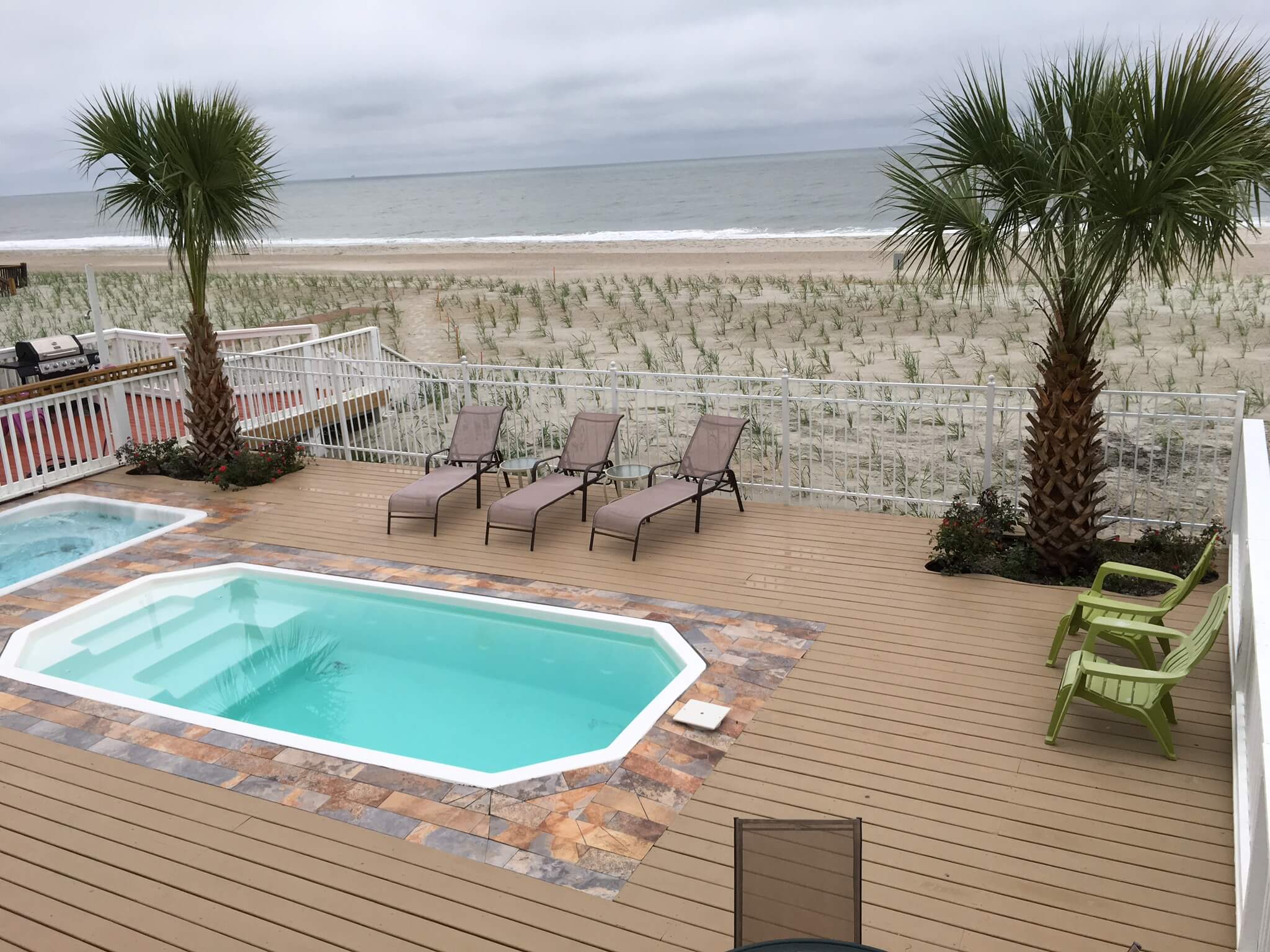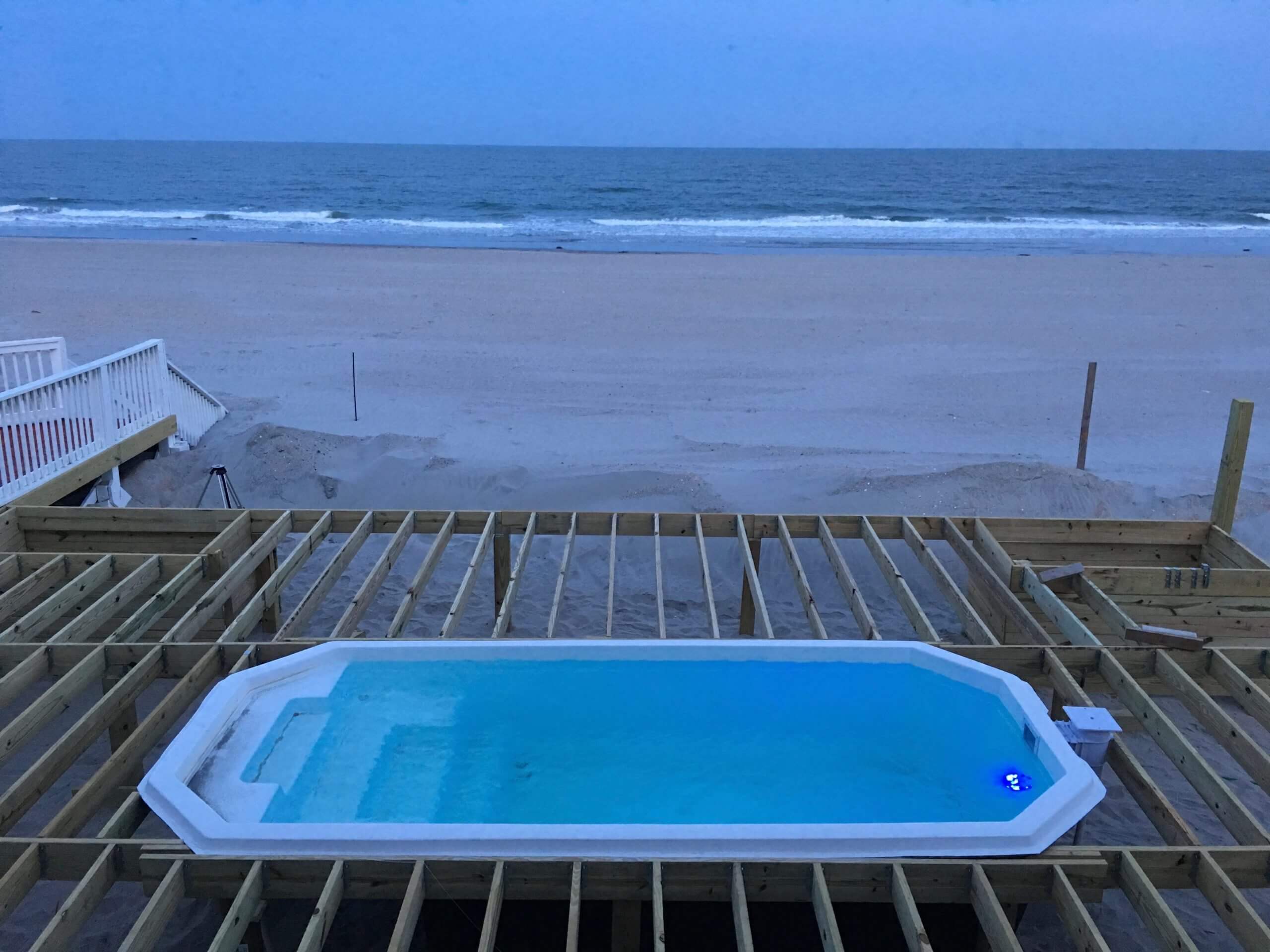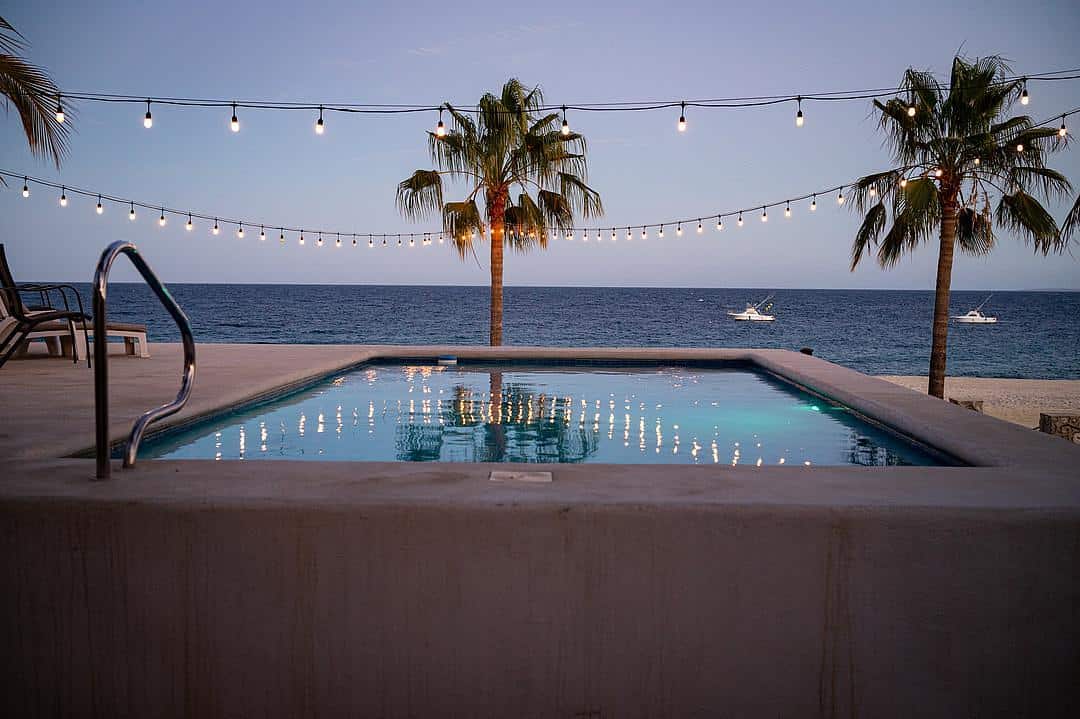Imagine waking up to the sound of waves, stepping onto your deck, and diving into your very own private oasis with the ocean as your backdrop. A beachfront pool installation transforms your coastal property into the ultimate retreat, combining the best of beach living with the luxury of a personal swimming pool.
But the salt, sand, and storms that make beach living so special also create unique challenges for pool owners. Understanding how to protect your investment from these elements is essential for enjoying years of trouble-free swimming in your coastal paradise.

Contents
- Coastal Challenges Every Homeowner Should Know
- Pool Materials That Withstand Beachfront Conditions
- Erosion Control and Structural Reinforcement
- Best Practices for Beachfront Pool Installation
- Local Regulations and Permits for Coastal Builds
- Maintenance Routines and Budget Planning
- Your Next Step Toward a Coastal Oasis
Coastal Challenges Every Homeowner Should Know
Beachfront pool installation comes with unique challenges that directly impact your pool’s longevity. Salty air creates a highly corrosive environment that accelerates wear on standard pool components. Shifting sand beneath your pool can compromise structural integrity, potentially leading to cracks and leaks.
Coastal storms bring high winds and storm surge that threaten exposed pool areas. Understanding these challenges before installation helps you make informed decisions about materials and construction methods.
Pool Materials That Withstand Beachfront Conditions
Selecting the right materials for your beachfront pool is crucial for long-term durability. Marine-grade stainless steel hardware resists salt corrosion far better than standard options. Salt-resistant composite decking materials offer better longevity than traditional wood in coastal environments.
Fiberglass Pool Benefits for Coastal Installations
Fiberglass pools provide superior salt resistance with their non-porous gel coat surface. They flex slightly during ground movement, reducing the risk of cracks in shifting coastal soils.
- Corrosion resistance: The smooth, non-porous surface doesn’t absorb salt or chemicals
- Flexibility: Adapts to minor ground shifts common in beach areas
- Low maintenance: Requires fewer chemicals and less cleaning than concrete options
Concrete vs. Fiberglass in Harsh Environments
Concrete pools require more maintenance in salt environments as their porous surface absorbs salt and chemicals. They typically need resurfacing on a more frequent schedule when installed near beaches.
Fiberglass pools maintain their structural integrity with minimal maintenance over many years, even in harsh coastal conditions.

Erosion Control and Structural Reinforcement
Proper erosion control is essential for successful beachfront pool installation. A comprehensive drainage plan directs water away from your pool foundation and prevents sand washout during heavy rains.
Geotextile fabrics installed during construction help stabilize the surrounding soil and prevent erosion beneath your pool.
Use of Pilings for Stability
Deep pilings anchor your pool structure below the erosion zone, providing crucial stability in shifting coastal soils. They transfer the structural load to stable soil layers, preventing settlement issues common in sandy environments.
Retaining Walls and Proper Drainage
Strategically placed retaining walls protect your pool area from sand migration and coastal erosion. French drains and catch basins redirect water flow away from vulnerable areas of your pool structure.
Permeable surfaces around your pool allow for better water absorption, reducing runoff and erosion potential.
Best Practices for Beachfront Pool Installation
Professional soil testing before installation identifies potential stability issues specific to your beachfront property. Elevated equipment pads keep pumps, filters, and heaters above potential flood levels during coastal storms.
- Proper elevation: Install pool equipment at least 1-2 feet above flood levels
- Strategic orientation: Position the pool to minimize exposure to prevailing winds
- Buffer zones: Create landscape barriers to reduce salt spray exposure
Steps to Reduce Salt Corrosion
Rinse all pool surfaces and equipment regularly with fresh water to remove salt residue. Apply protective coatings to exposed metal components at installation and reapply annually.
Install sacrificial anodes that corrode first, protecting more valuable pool components from salt damage.
Methods to Shield Against Storm Damage
Install hurricane-rated pool covers that can withstand high winds and prevent debris from entering your pool. Use waterproof equipment enclosures with proper ventilation to protect pumps and filters.
Consider removable deck furniture and accessories that can be quickly stored before storms arrive.
Local Regulations and Permits for Coastal Builds
Coastal construction typically requires specialized permits beyond standard pool installation approvals. Environmental impact studies may be necessary to ensure your pool doesn’t harm sensitive coastal ecosystems.
Setback requirements from dunes, wetlands, and high-tide lines are strictly enforced in most coastal communities. Many coastal areas have specific engineering requirements for pools to withstand hurricane-force winds and storm surge.
Working with contractors familiar with local coastal building codes saves time and prevents costly mistakes.
Maintenance Routines and Budget Planning
Beachfront pools require more frequent maintenance checks than inland installations due to salt exposure. Establishing a quarterly professional inspection schedule helps catch small issues before they become major problems.
Budgeting for more frequent equipment replacement is necessary when operating a pool in corrosive coastal conditions.
Preventive Upkeep for Long-Term Protection
Check salt levels monthly and adjust your pool chemistry accordingly to prevent corrosion and scaling. Inspect equipment seals and gaskets quarterly for signs of salt damage or deterioration.
- Monthly tasks: Test water chemistry, clean skimmer baskets, check for salt buildup
- Quarterly tasks: Inspect equipment seals, clean filter thoroughly, check structural elements
- Annual tasks: Reapply protective coatings, inspect pilings and drainage systems
Estimating Costs for Parts and Service
Budget more for annual maintenance compared to inland pools due to the harsh coastal environment. Plan for more frequent replacement of pumps and heaters, as recommended in coastal environments.
Consider setting aside funds for potential storm damage repairs, especially during hurricane season.
Your Next Step Toward a Coastal Oasis

Creating a beautiful beachfront pool requires specialized knowledge and materials, but the rewards of enjoying your coastal oasis are worth the investment. Proper planning and material selection now will save thousands in repairs and maintenance over your pool’s lifetime.
Working with experienced professionals who understand coastal challenges is the key to a successful beachfront pool installation. Ready to explore an easier, more affordable approach to your beachfront pool project? Check out Pool Brokers USA’s Request a Quote to get started with experts who understand the unique requirements of coastal installations.
